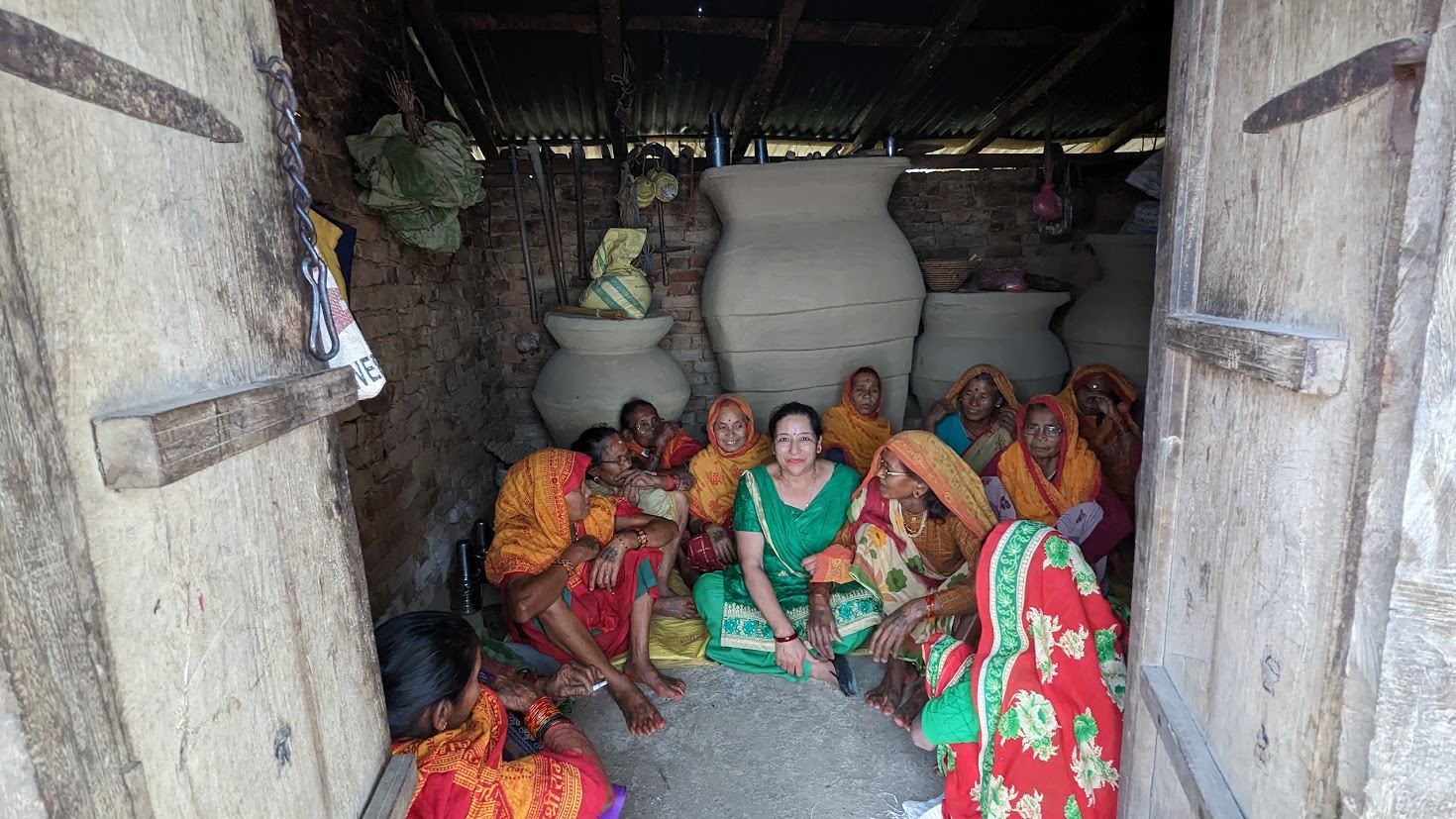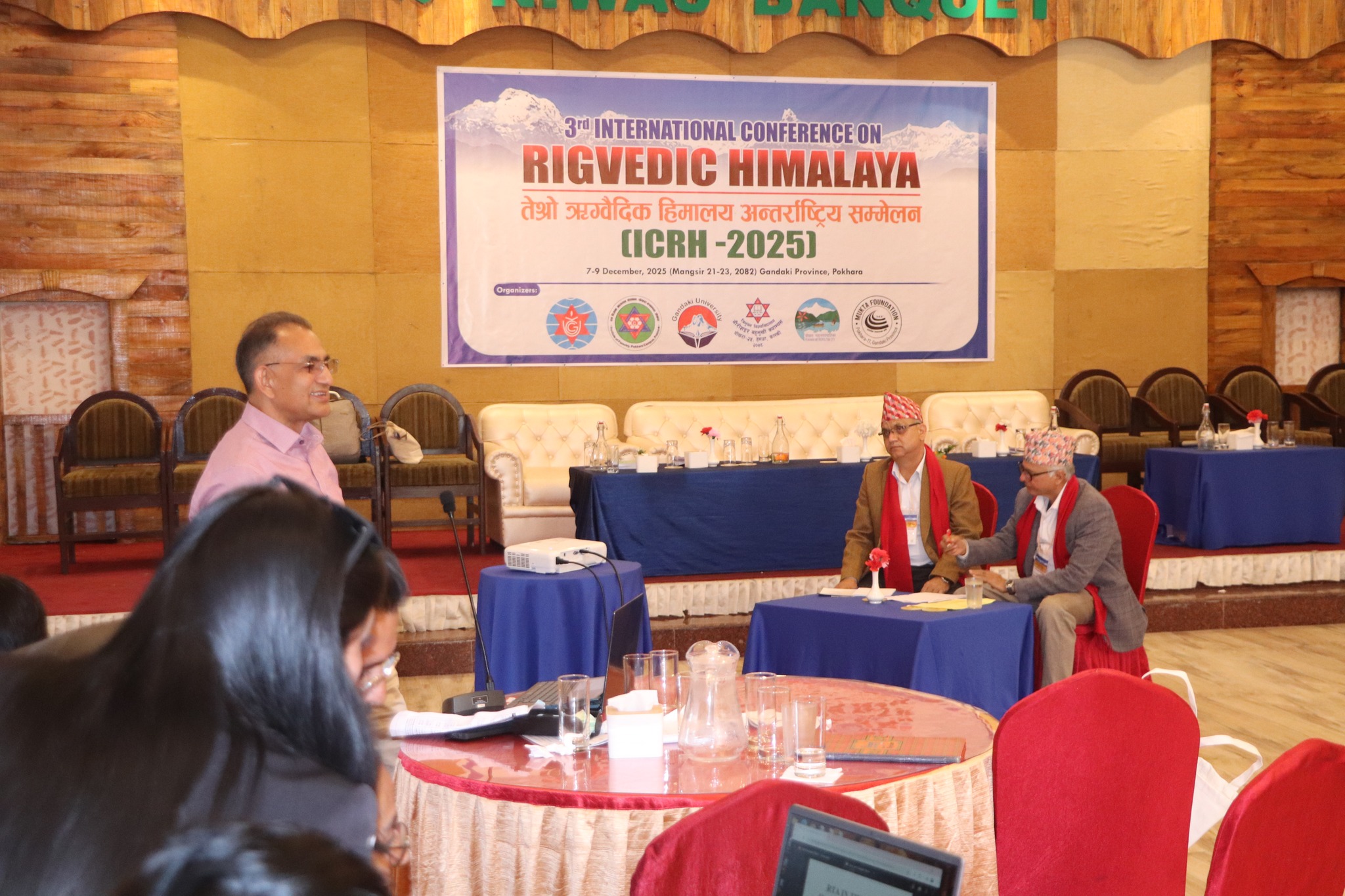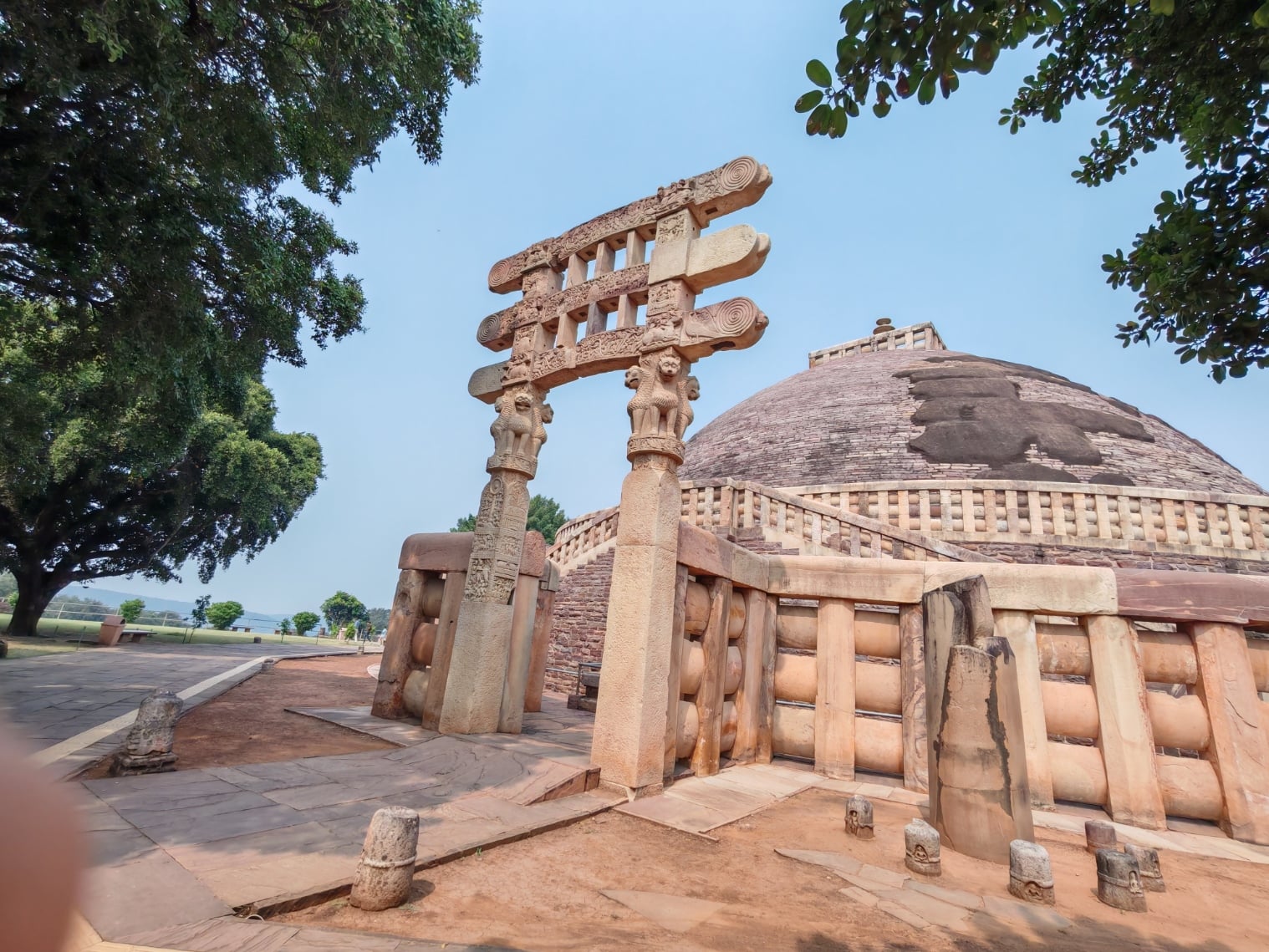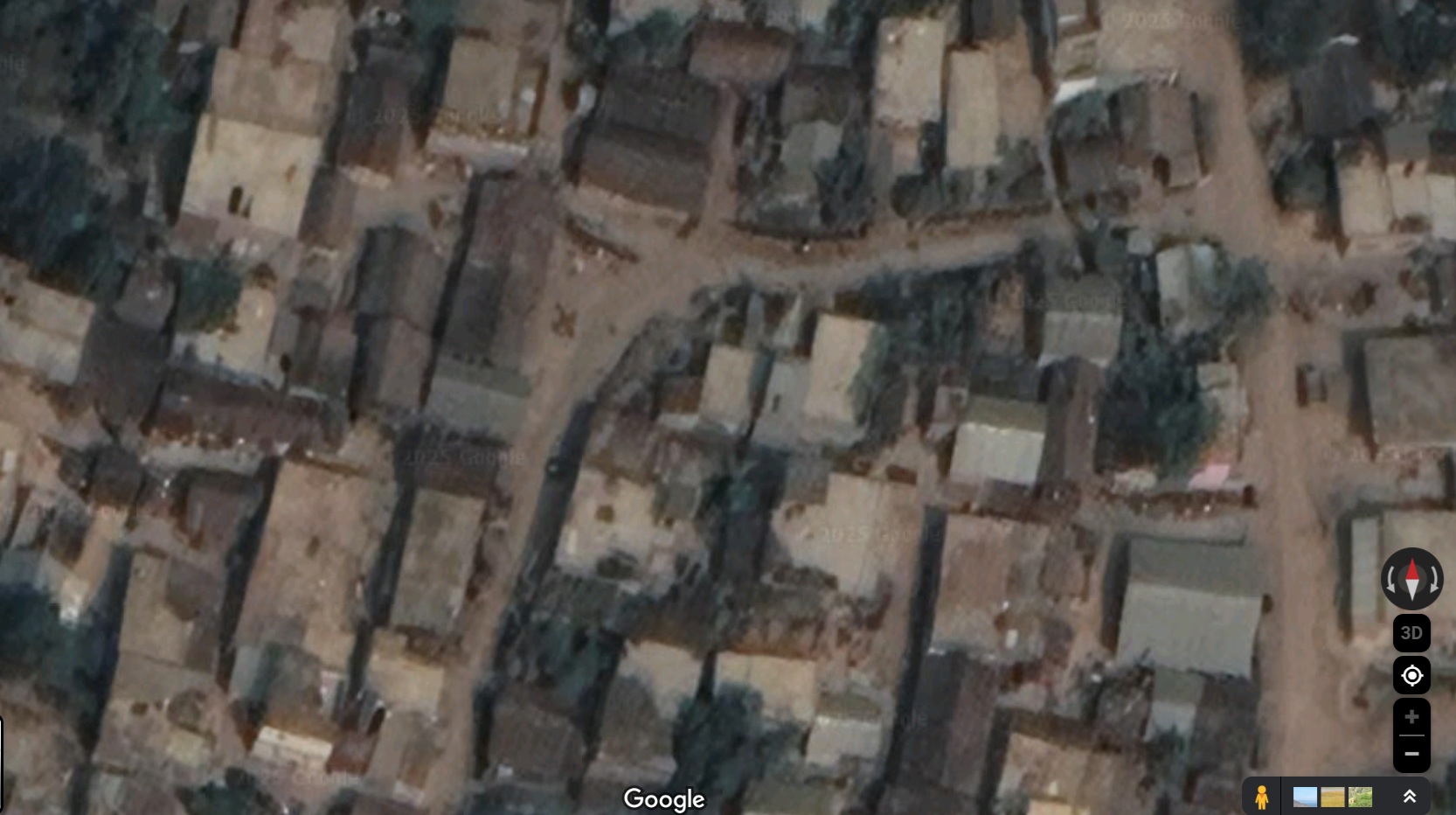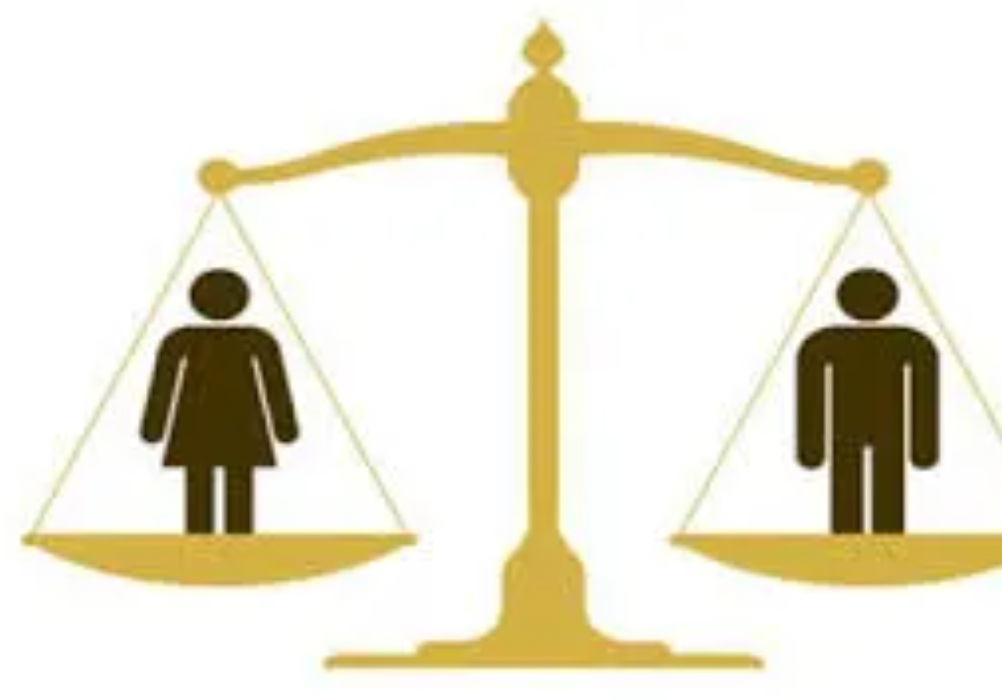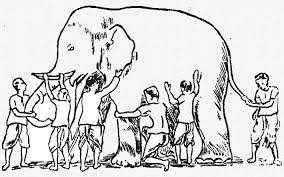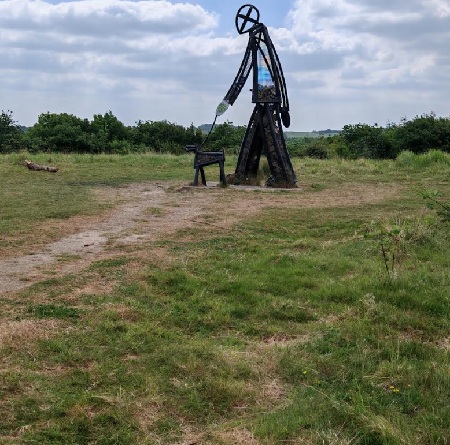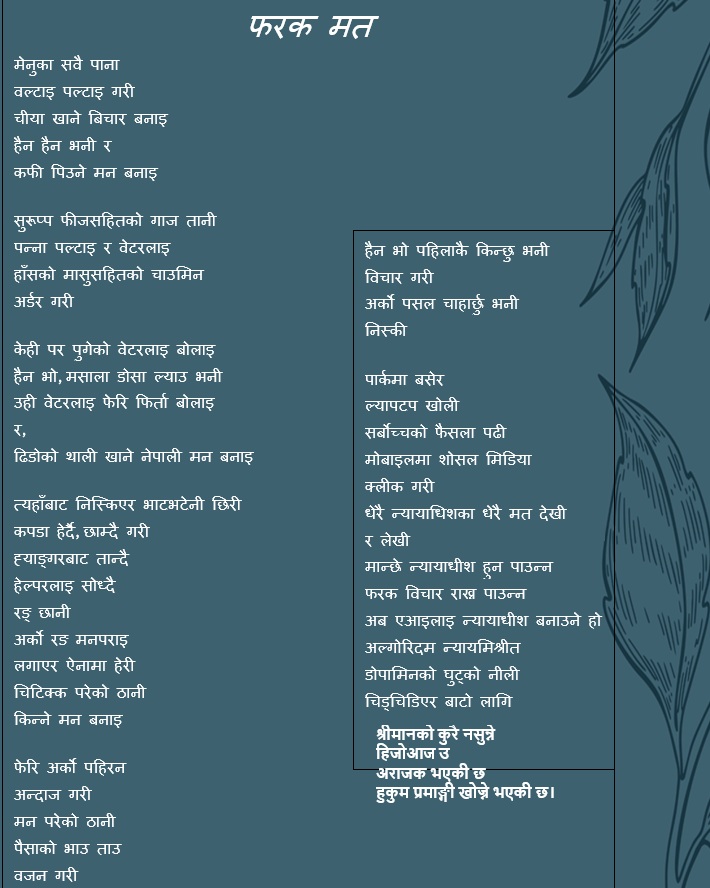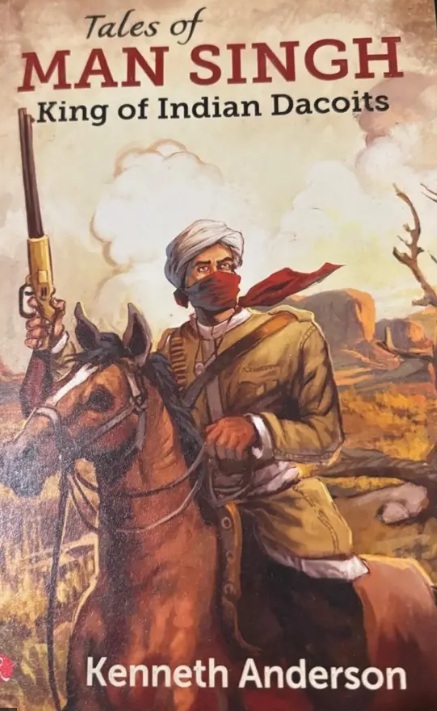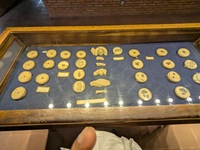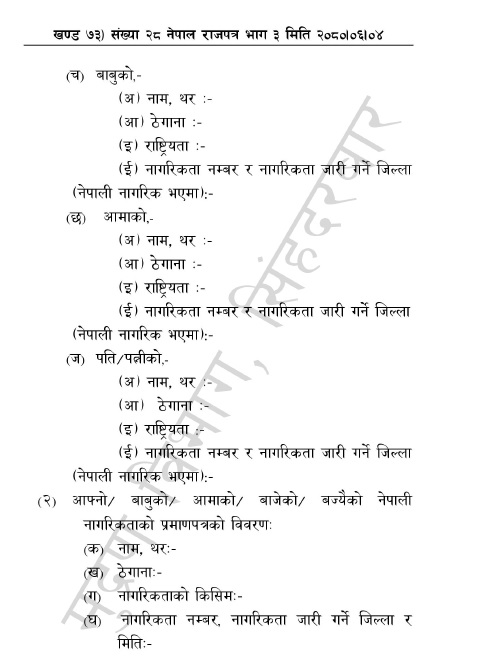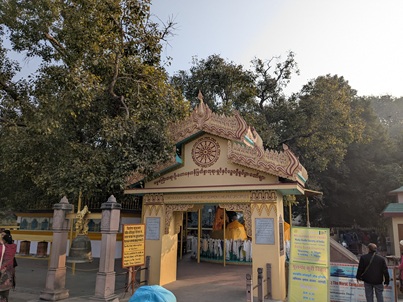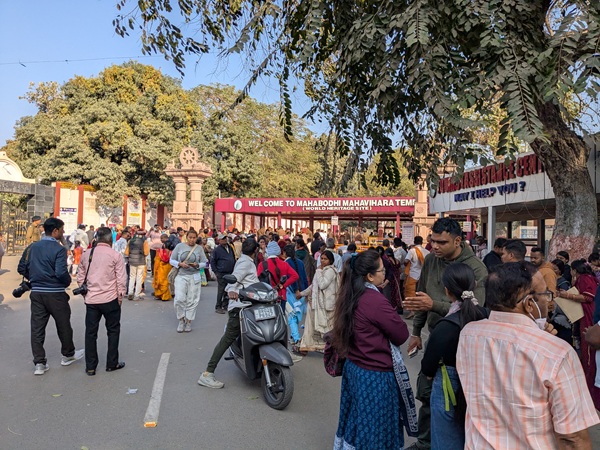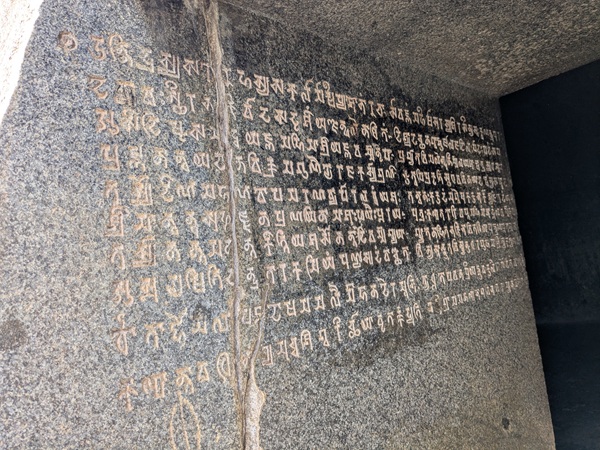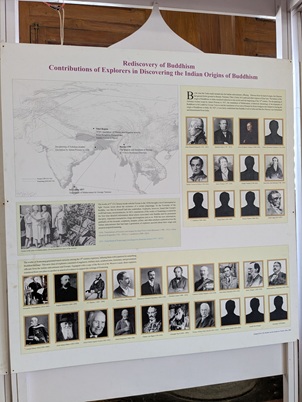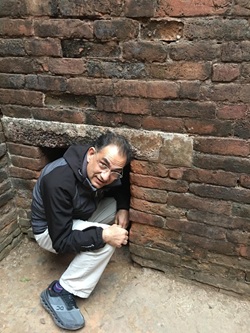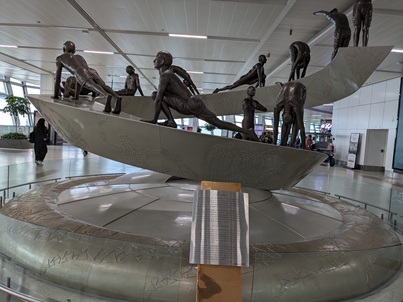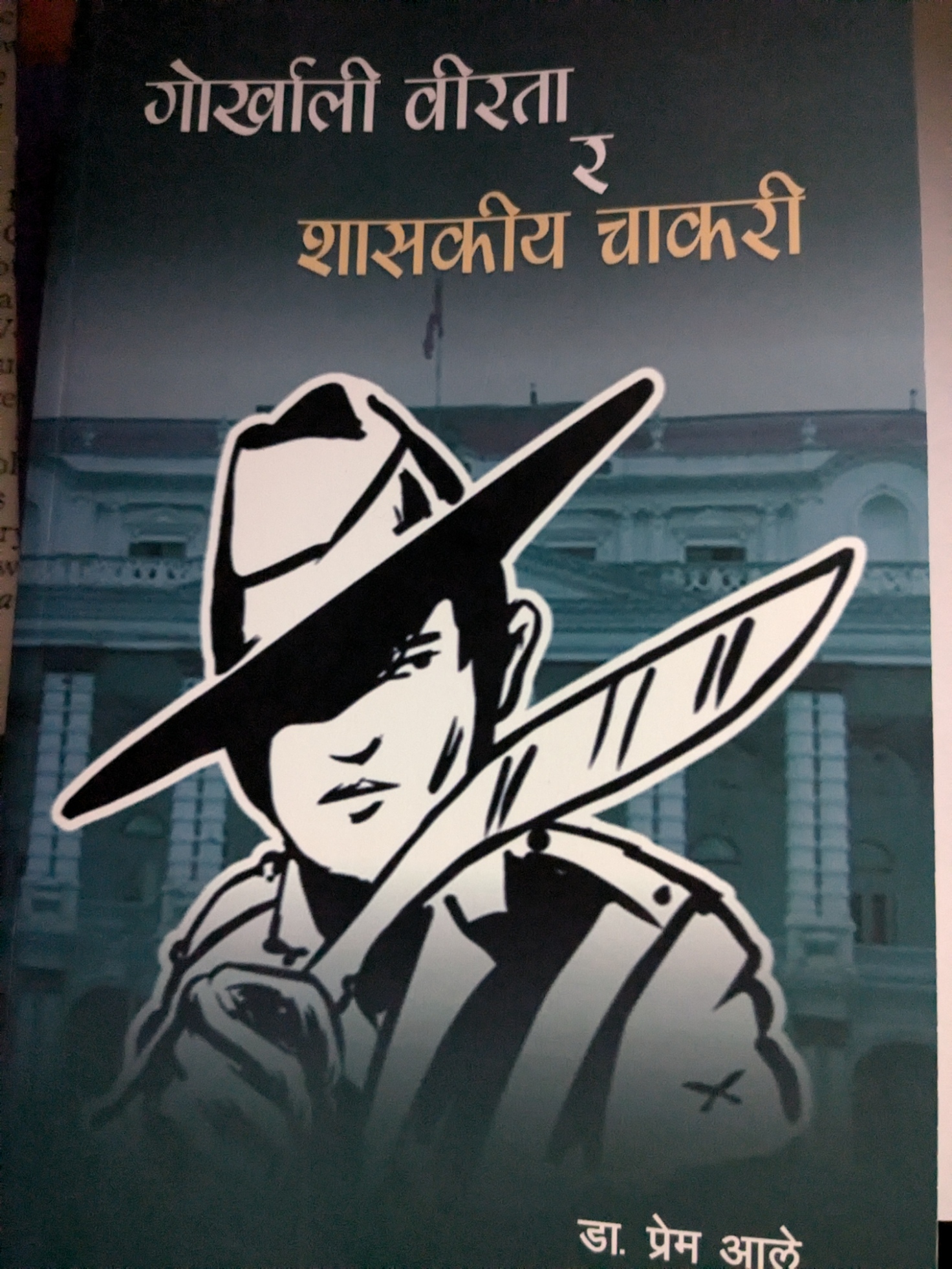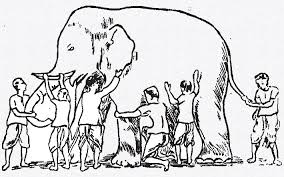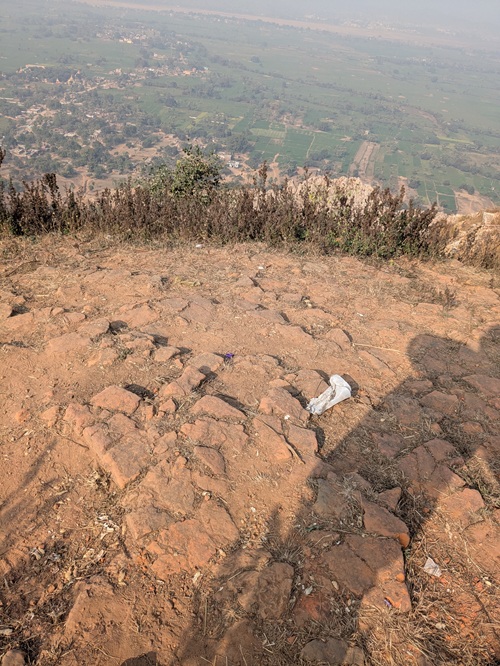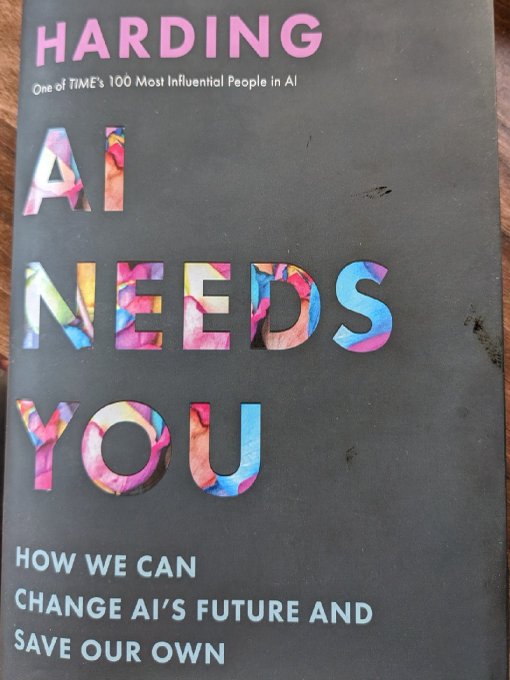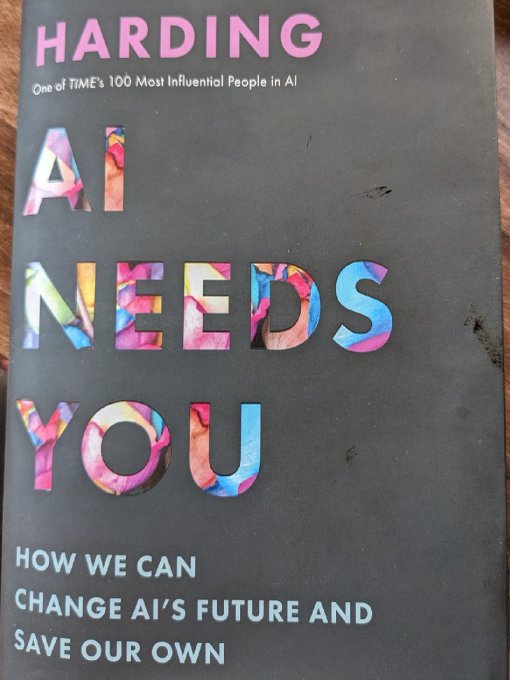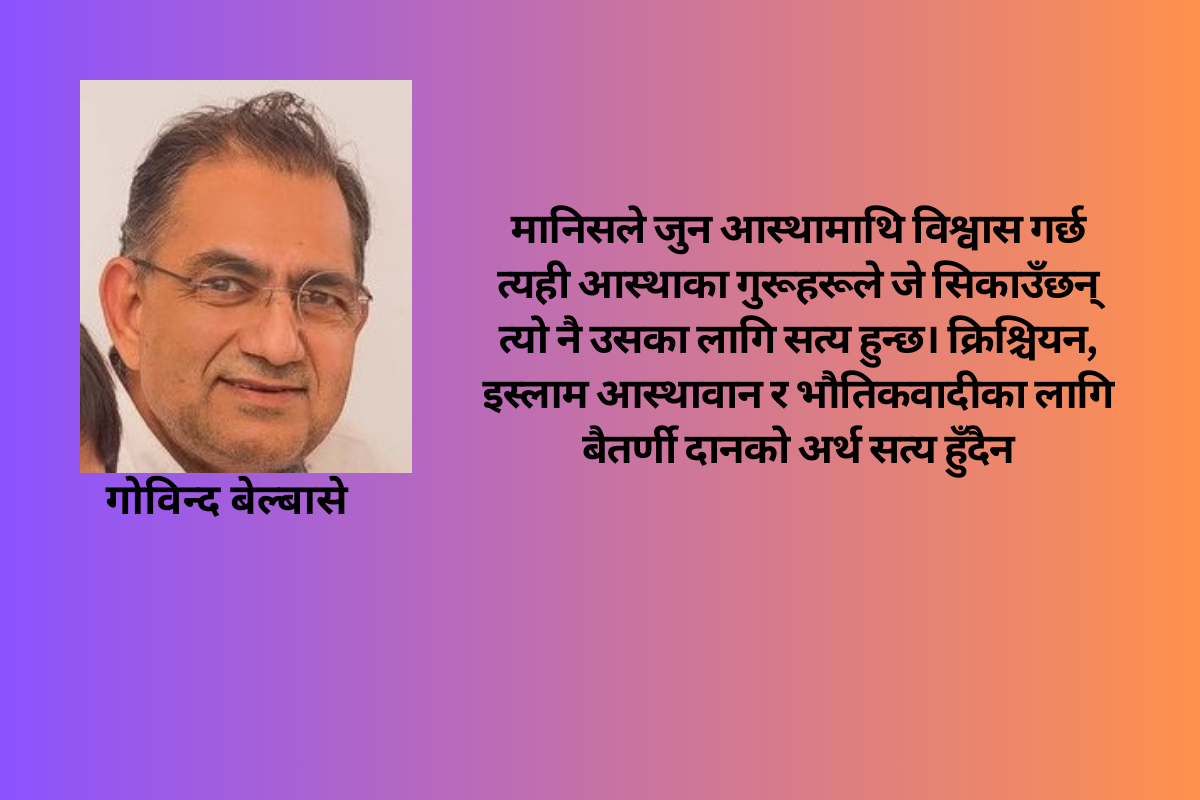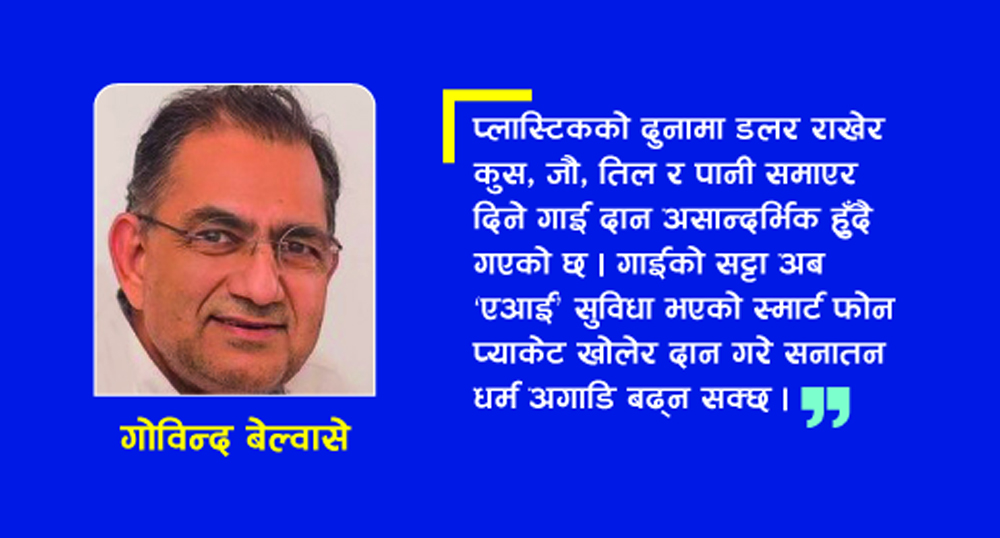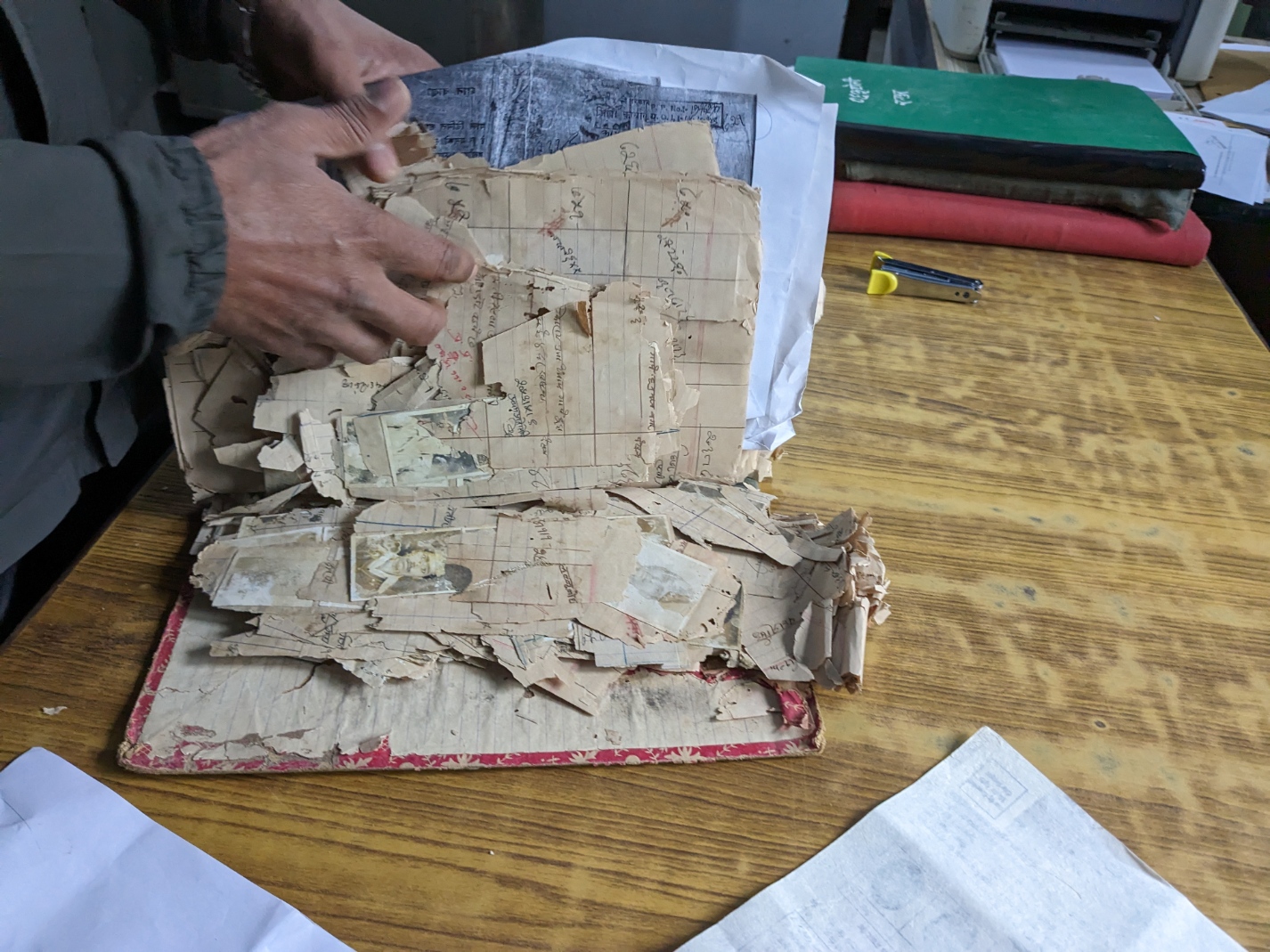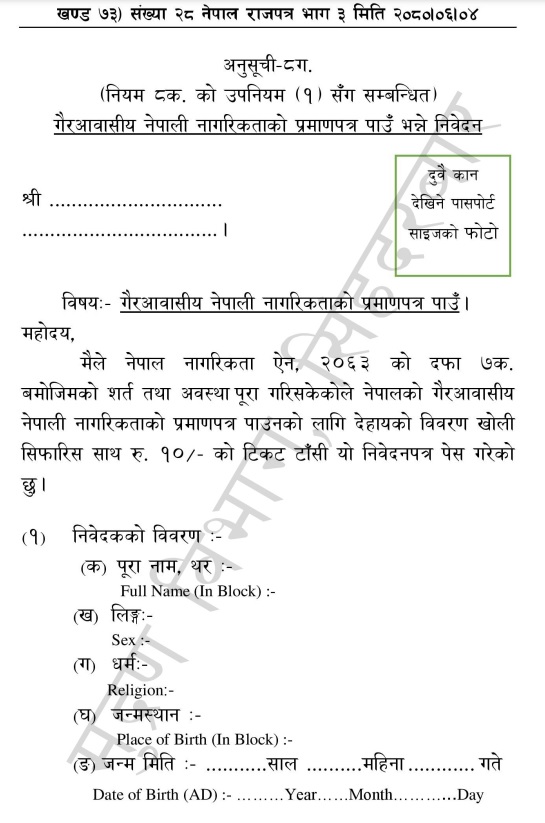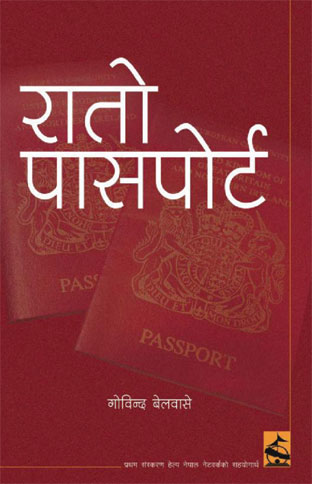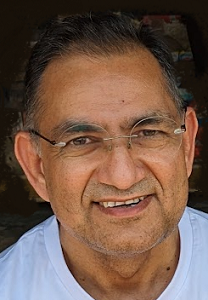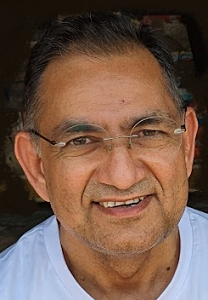वि�...
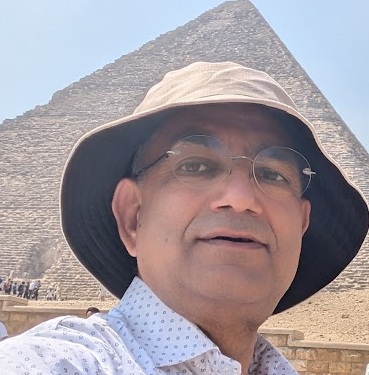
BARNA Segregation in Sanatana v. equality
29 Aug, 2024BARNA Segregation in Sanatana v. equality
Synopsis
Ancient Sanatana society was model civilization for Columbus[1] and Vasco de Gama[2]. Is the quarter of population[3] dedicated to education performs better than equal opportunity? If yes, then why southeast known as Indian civilization was failed to evolve compared to western civilization after 12th century.
Easy visa welcome only for highly skilled workers in developed countries might be a symbol of segregated selection in cyber era,[4] although it is not like Sanatana BARNAs.
Modern global society has been evolved through the unification and contradiction of different religious beliefs. Interviews with expert scholars will provide direction for the research as it is a untouched research issue. Archaeological visit to Ajanta Caves[5], Nalanda[6], Takshashila[7], Great Pyramid of Giza[8], Stonehenge[9] and China along with local scholar discussion will help to find the answer.
Interaction with scholars within 4 Months to find road map and one year to discuss with local academics and another 8 months to analyse discussion and literature, all together study will be completed in two years.
Will the non-religious concept facilitate China to grow, or Hindutva will hinder India to make better society? What role does religious concept as well as sectorial group for education play the role to develop better society?
Introduction
Once upon a time, India was known as a golden Sparrow [10] to the western society that encouraged Christopher Columbus[11] to reach there but ended in America. Similar attempted goal was achieved by Vasco da Gama[12].
Finding an impact on developing modern technology between Sanatana tradition and rest of the world will recognize a part of social evolution. It will give us an answer as to whether a dedicated group for education in the society was better for developing in Nalanda Mahvihara[13] era while the equal opportunity system adopted society was less modernized in contemporary society.
South Asian society evolved with different hierarchical caste system[14] than rest of the world. Social class division in India (which comprises a bulk of South Asia) are based in caste[15]. Sanatana facilitated Indian society was divided into 4 BARNAs[16]. The Varna system outlines four castes, or savarna: Brahmins (priests; intellectuals); Kshatriyas (warriors; administrators); Vaishyas (farmers; traders); and Shudras (Workers; Laborers). Outcastes from the Hindu fold are those who do not belong to any varna (Avarna): the Adivasi tribes of the subcontinent, and the Untouchables or, Dalits ( depressed or broken people) who are seen to pollute Hindu society[17]. As the lowest of the low, Dalits are assigned the most unclean tasks; the removal of waste; tending of funeral pyres; butchery, etc.
Accordingly, the Hindu caste system has two main aspects. On the one hand, men, women, and children are divided up into separate communities. On the other hand, these communities are placed in graded order, one above the other in social rank according to their Varna.
Learning from traditional (Sanatan) culture based contemporary Indian values was a dream for Western society[18]. Nevertheless, modern sophisticated technologies including commercial steam engine were invented in the western world.
Think tanks and policy makers were produced from Brahmans and they were the apex part of BARNAs. Those 25% of the society were dedicated to full-time education. Their knowledge was counted as wealth and none of other assets were counted more valuable.
On the other side of the world none of the society was divided and nominated only a part of society for education. Other than Sanatana society in the world everyone was free to get education and be a part of think tank as well as policy makers.
China s Communist Party adheres to atheism[19] and promotes a secular state. This non-religious stance has allowed for centralized control, rapid economic growth, and technological advancements. The absence of religious influence has streamlined policies and fostered a cohesive national identity.[20]
Hindutva, an ideology rooted in Hindu nationalism, has gained prominence in India. It seeks to establish Hindu supremacy and often marginalizes religious minorities[21]. While India s rich cultural diversity remains an asset, religious tensions persist. Hindutva policies can hinder social cohesion and exacerbate divisions[22].
Education plays a crucial role. Sectorial groups, including religious institutions, can contribute positively by promoting tolerance, critical thinking, and ethical values[23]. However, they must avoid exclusivity and discrimination[24].
China s non-religious approach has facilitated growth[25], while India grapples with balancing religious identity and societal progress. Education, regardless of affiliation, remains pivotal for fostering a better society[26].
Govind Belbase a key person of this research has witnessed of Dalit mentality. For example, tailoring was not commercialised in Nepal during my childhood. Tailoring used to be a family profession and offsprings were trained in the skill for their future life. Tailors are untouchable lower caste. Sometimes upper-caste children were waiting to get ready their clothes during festival season at a tailor s house. Tailor family refused to provide drinking water if they requested. The reason behind refusal was a religious belief[27] that being born in a lower caste was a punishment given by God for wrong karma in previous life. They feared they will be punished again in future life by God if they provided their touched water to upper caste people. The thought was taught through informal education by religious panditas in Prabachan (Lectures), religious classes and rituals by virtue of Hindu religious textbooks such as Puranas[28] and Manu Smriti[29]. Those lower caste people were not allowed to get an education like they were restricted to read VEDAS[30]. Dalits were (are) largely deprived from equal opportunity for education and social justice[31]. A survey among students showed that students from the disadvantaged social groups expressed a strong feeling that they did not receive adequate academic support and were ignored in classroom transactions[32]. For example: Dr B.R. Ambedkar, chair of the drafting committee of the Constituent Assembly of India, was born into a Dalit Mahar family in Mhow, western India. He was humiliated by his high-caste schoolfellows[33].
There should be difference between BARNA in earlier (Vedic) Hindu Texts (Granths) and caste system in practice in modern era. Caste system is not much described earlier than Magadha empire[34]. Hindu texts earlier than Magad empire era describes about BARNAs and caste description is widely found in Manu smriti[35]. Friedrich Max M ller s theory of Hindu myth as a disease of language, explained pagan idolatry and polytheism as a linguistic confusion[36].
Ancient Indian society had advanced knowledge institutions like Nalanda. Nalanda was an acclaimed Mahavihara, a large Buddhist monastery in the ancient kingdom of Magadha (modern-day Bihar) in India. The site is located about 95 kilometres southeast of Patna near the town of Bihar Sharif and was a centre of learning from the fifth century CE to1200 CE[37]. The adoption of specific technologies depended on context, colonial constraints, and the unique challenges faced by each society. The absence of steam engines in ancient India cannot be reduced to a simple comparison of knowledge levels with the West. The failure to develop steam engines in India during the Nalanda era cannot be attributed solely to knowledge. It involved a complex interplay of historical, cultural, and economic factors.
The influential German sociologist, Max Weber's methodology provides insights into why Indian society during the Nalanda era may have been advanced in certain aspects[38].
Nalanda as an education hub in India was well known not only in the western society but also in contemporary China. Xuanzang visited India between 629 to 645 CE[39] and spent 15 years in Nalanda. He also describes about Ajanta Caves[40]; Ajanta Caves would have been a much older education hub[41] than Nalanda.
Few dynasties had funded[42] to extend Ajanta caves which proves the Ajanta infrastructure for education centre was older than Nalanda. 2BC Paints making knowledge[43] and Jataka stories described by paintings will give us much more idea to find Buddha era and earlier than that society along with BARNAs hierarchical practice.
Knowledge and texts collection transferred by Xuanzang to China from Nalanda would be a main source to compare Sanatana society with contemporary China. We have little expectation compared to Nalanda from Less explored Takshashila[44] too.
Great Pyramid of Giza[45] and Stonehenge[46] facts are also helpful to find contemporary social practice to compare with Sanatana practice to find main research goal.
Research Questions
Why southeast, known as Indian civilization was failed to evolve compared to western civilization after 12th century, If the ancient Indian educational practice was better. Indian education system was based on quarter population of the society dedicated for education and rest of population were dedicated for production.
Western society was able to invent steam and auto engine as well as digital and cyber technology, while society has not been divided for profession although class division could be seen in practice but not in policy.
London's Centre for Economics and Business Research calculated that China would indeed become the world's largest economy for 21 years, before the US reclaims the lead in 2057, itself to be overtaken by India around 2081[47]. We may find whether Xuanzang s knowledge, learned from Nalanda in 15 years, impacted Chinese society to achieve invention goal although social segregation for education practice is not adopted in China.
Chinese state faith is known as non-religious since 1949 revolution. Indian governance is moving towards Hindutva[48] since Bharatiya Janata Party is holding the mainstream of governance. BARNA system is influencing inequality[49] in Indian education although the constitution adopts egalitarian[50] concept.
Will the non-religious concept facilitate China to grow, or Hindutva will hinder India to make better society? What role does religious concept as well as sectorial group for education pay the role to develop better society?
Study design and method:
Design: Qualitative/Exploratory
Findings of DharamPal s The beautiful tree [51] and Xuanzang[52] travel literature along with Chandra Prakash Bhan and Dr B. R. Ambedkar s experience will provide a basic concept of the difference between education opportunities and the impact of two-time frame in the society in China and India. Faxian[53] and Yijing[54] travel history will support to investigation of different practices between modern and ancient China and India.
An interview with Chandra Prakash Bhan[55] regarding the survey mentioned by DharmalPal to find out education system earlier then British Raj in India whether the caste system is different than BARNAs. What is difference and periodical consequences between two if not the same. Periodical difference could be discussed regarding BARNAs practice earlier then Manu Smriti (Magadh era) and present caste practice.
An interview with Professor Diwakar Acharya[56] regarding Hindu texts regarding the education system and student selection practice in Vedic era. He may give us an outline to find weakness of BEDA education system and practice which could be a reason to raise of Buddhism in 5th BC. Chandra Prakah Ban can add the opinion why Dr Ambedkar converted to Buddhism from Hinduism.
Xuanzang s collection are important due to the destruction[57] of Nalanda library to find out education system in that era. He had learned and taken texts from Nalanda. One notable scholar who has studied Xuanzang s work is Dr. Edward H. Schafer, a historian of China and Central Asia. Dr. Schafer s book The Golden Peaches of Samarkand: A Study of T ang Exotics includes a detailed analysis of Xuanzang s travels and his contributions to the understanding of Buddhism in China.
Additionally, Dr. John Strong, a professor emeritus at the University of Washington, has written extensively on Xuanzang and his impact on Chinese Buddhism.
Peking University or Tsinghua University, may also have resources or contacts related to Xuanzang s work.
For more specific inquiries, contacting the National Library of China or the Buddhist Association of China could provide leads on where Xuanzang s texts are housed and who might assist us.
Max Weber[58] s finding regarding the impact of belief on industrialisation will help to compare with Jyotiba Phule[59] and Rabindranath Tagore[60] between Southeast and western societies. This literally review will help to compare western equal opportunity with Sanatana segregated education practice. Chandra Bhan Prasad[61], who has worked much regarding Dr Ambedkar, must have idea about Jyotiba Phule and Rabindranath Tagore because Dr Ambedkar was influenced[62] by both[63].
Although I could not find much information to find Christopher Columbus s intention to discover India but convinced that Columbus and Vasco da Gama were enthusiastic to find better knowledge sources and technology for prosperous society. Exploring this hypothesis[64] should enable to find the answer.
We will collect additional questionnaire survey with local academics who has researched about Ajanta Caves, Nalanda education practice in India and Chinese scholar related to ancient Chinese education practice. Few scholars will be included on survey in regard to non-religious government practice in China and Hindutva motivated governance in India.
Interviews and Discussions
Interviews with experts such as Professor Diwakar Acharya[65], Chandra Bhan Prasad[66] will provide direction for the research.
An interview with Chandra Prakash Bhan[67] regarding the survey mentioned by DharmalPal to find out education system earlier then British Raj in India whether the caste system is different than BARNAs. What is difference and periodical consequences between two if not the same. Periodical difference could be discussed regarding BARNAs practice earlier then Manu Smriti (Magadh era) and present caste practice.
An interview with Professor Diwakar Acharya[68] regarding Hindu texts regarding the education system and student selection practice in Vedic era. He may give us an outline to find weakness of Beda education system and practice which could be a reason to raise of Buddhism. Chandra Prakah Ban can add the opinion why Dr Ambedkar converted to Buddhism from Hinduism.
Surveys & Focus Group
Archaeological visit to Ajanta Caves[69], Nalanda[70], Takshashila[71], Great Pyramid of Giza[72], Stonehenge[73] and China along with local scholar discussion will help to find the answer. Team member Govind Belbase has already visited Ajanta Caves[74], Stonehenge and Great Pyramid of Giza to write this proposal. Archaeological visit will either support the thought with Dr Chandra Bhan Prasad & Dr Diwakar Acharya. We will analyse Xuanzang s collection after both interviews and before archaeological visit.
We will collect additional questionnaire survey with local academics who has researched about Ajanta Caves, Nalanda education practice in India and Chinese scholar related to ancient Chinese education practice. Few scholars will be included on survey in regard to non-religious government practice in China and Hindutva motivated governance in India.
Expertise within the Research Team
Principal Investigator (PI)
Role: Oversee research design, data collection, analysis, and final report writing.
Co-Investigators
Specialization: South Asian History, Caste Systems, Comparative Education.
Expert in Religious Studies: Knowledge of Hinduism, Sanatana traditions, and their social impacts.
Economic Historian: Expertise in the economic development of India and Western societies.
Sociologist: Focus on caste dynamics and social inequality.
Technological Historian: Understanding of technological advancements in Western and Indian contexts.
Anthropologist: Experience in conducting fieldwork and ethnographic studies in South Asia and China.
Research Assistants
Roles: Assist with data collection, literature review, interview transcriptions, and survey administration.
Skills: Proficiency in relevant languages (Hindi, Sanskrit, Mandarin), qualitative and quantitative research methods, and data analysis tools.
Collaborators
Local Scholars: Experts from universities and research institutions in India and China.
Consultants: Specialists in ancient Indian education systems, archaeological methods, and comparative technology history.
Resources Needed
1. Literature and Data Sources
Access to archives, historical texts, travel literature, and academic journals.
Subscriptions to digital libraries and databases.
2. Fieldwork Equipment
Audio and video recording devices for interviews and site visits.
Laptops and tablets for data entry and analysis in the field.
3. Travel and Accommodation
Field trips to India (Nalanda, Ajanta Caves, Takshashila) and China.
Visits to historical sites and universities.
Collaboration meetings with local scholars and experts.
4. Survey and Interview Materials
Printing of survey questionnaires and consent forms.
Translation services for multilingual documents.
5. Software
Data analysis tools (NVivo, SPSS).
Transcription software for interviews.
Reference management software (EndNote, Zotero).
Proposed Costings and Justifications
Research Proposal Budget
[1] Editors And Tyler PiccottiUPDATED: OCT 9, 2023; https://www.biography.com/history-culture/christopher-columbus accessed on 12 April 2023 at 12:18pm
[2] Vasco da Gama s Early Life and First Voyage to India, UPDATED: JUNE 6, 2023 | ORIGINAL: DECEMBER 18, 2009, https://www.history.com/topics/exploration/vasco-da-gama, Visited on 12 April 2023 at 12:20 pm
[3] Brahmans out of 4 BARNAs in Sanatana practice
[4] Elizabeth Mavroudi and Caroline Nagel, Global Migration, patterns, processes and politics, (Routledge Taylor & Francis Group, 2017), page 154
[5] https://whc.unesco.org/en/list/242/ accessed on 09 May 2024 at 17:34
[6] https://whc.unesco.org/en/list/1502/ accessed on 09 May 2024 at 17:35
[7] https://whc.unesco.org/en/list/139/ accessed on 09 May 2024 at 17:37
[8] https://whc.unesco.org/en/list/86/ accessed on 09 May 2024 at 17:38
[9] https://www.english-heritage.org.uk/visit/places/stonehenge/ accessed on 09 May 2024 at 17:30
[10] Dr. Sutinder Singh, Tourism in Jammu and Kashmir,( Educreation Publishing, ISBN: 978-1-5457-0351-9)
[11] Editors And Tyler PiccottiUPDATED: OCT 9, 2023; https://www.biography.com/history-culture/christopher-columbus accessed on 12 April 2023 at 12:18pm
[12] Vasco da Gama s Early Life and First Voyage to India, UPDATED: JUNE 6, 2023 | ORIGINAL: DECEMBER 18, 2009, https://www.history.com/topics/exploration/vasco-da-gama, Visited on 12 April 2023 at 12:20 pm
[13] Li Rongxi (1996), The Great Tang Dynasty Record of the Western Regions, Bukkyo Dendo Kyokai and Numata Center for Buddhist Translation and Research, Berkeley, pp. 229 249
[14] Chandra Bhan Prasad, Ep 296: Caste, Capitalism and Chandra Bhan Prasad, podcast accessed on 14 April 2024 at 14:44 https://open.spotify.com/episode/35jOsQQC4YKKGdoDB2x06D
[15] B. R. Ambedkar, Who Were the Shudras, (General Press 2021, ISBN:9789354991028, 9354991025)
[16] ऋग्वेद संहिता, मण्डल 10, सूक्त 90, ऋचा 12, (ब्राह्मणः अस्य मुखम् आसीत् बाहू राजन्यः कृतः ऊरू तत्-अस्य यत्-वैश्यः पद्भ्याम् शूद्रः अजायतः ।) ; https://vedicscriptures.in/rigveda/10/90/12 Visited on 12 April 2023 at 12:57 pm
[17] Scott Mclaughlan, Dr. Ambedkar and the Annihilation of the Hindu Caste System 27 Dec. 2022, https://www.thecollector.com/hindu-caste-system-ambedkar/ accessed on 22 May 2024 at 12:33
[18] Salil Gewali, Great Minds on India, (Penguin Enterprise 2013)
[19] Anthony Walsh, Answering the New Atheists, (Vernon Press, 2019), page 33
[20] Rebecca Nedostup, Ritual Competition and the Modernizing Nation-State, Chinese Religiosities Edited by Mayfair Mei-Hui Yang, (University of California Press 2008) page 88
[21] Dr S. Khan, Vulnerabilities of Religious Minorities in India, https://www.internationalaffairs.org.au/australianoutlook/vulnerabilities-of-religious-minorities-in-india-unmasking-the-impact-of-rising-hindu-nationalism/ accessed on 06 June 2024 at 11:36
[22] Amit Singh, Hindutva is at war with secular democracy in India, 2nd February, 2024, https://blogs.lse.ac.uk/religionglobalsociety/2024/02/hindutva-is-at-war-with-secular-democracy-in-india/ accessed on 06 June 2024 at 13:11
[23] Dr Doreen Finneron, The Role of Faiths in Civil Society 2009, https://fbrn.org.uk/factsheets/role-faiths-civil-society accessed on 06 June 2024 at 11:41
[24] Ying Tian, Reflection on Religion s Role in Society, https://francis-press.com/uploads/papers/CPcRbg0HbCGTi51L7gNUpiAaNmpj9MIaXNcsnHwl.pdf accessed on 06 June 2024 at 11:46
[25] Vincent Goossaert and David A Palmer, The Religious Question in Modern China,(The University of Chicago Press, 2011)
[26] Mr Yadav Kamaji Gaikwad, Ambedkar s Critique of Caste-Based Politics and Relevance in Modern India, Research in Multidisciplinary Subject (Volume-12) page 12
© www.amaaba.org

